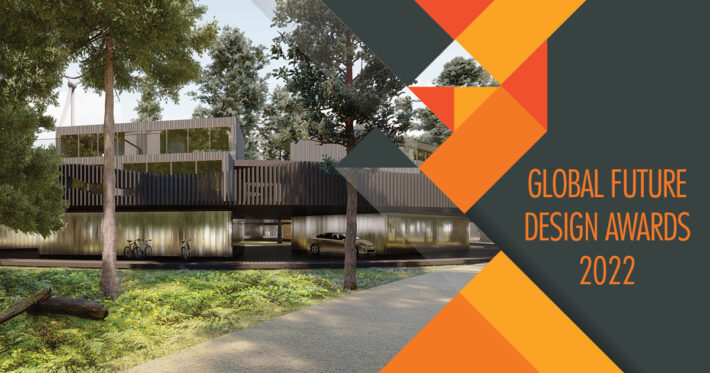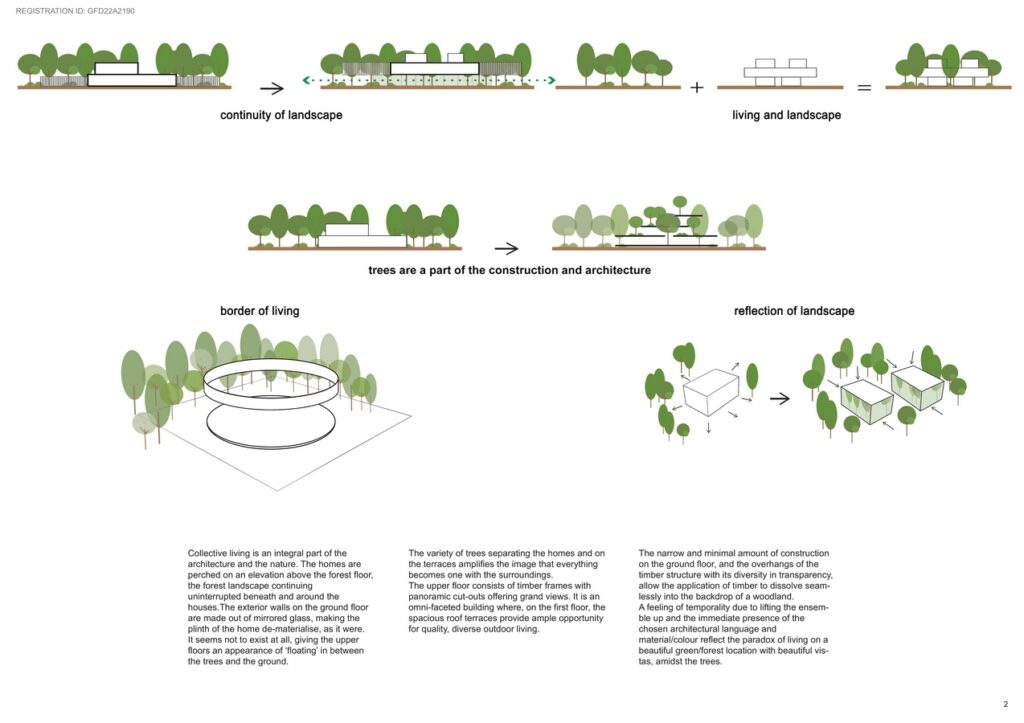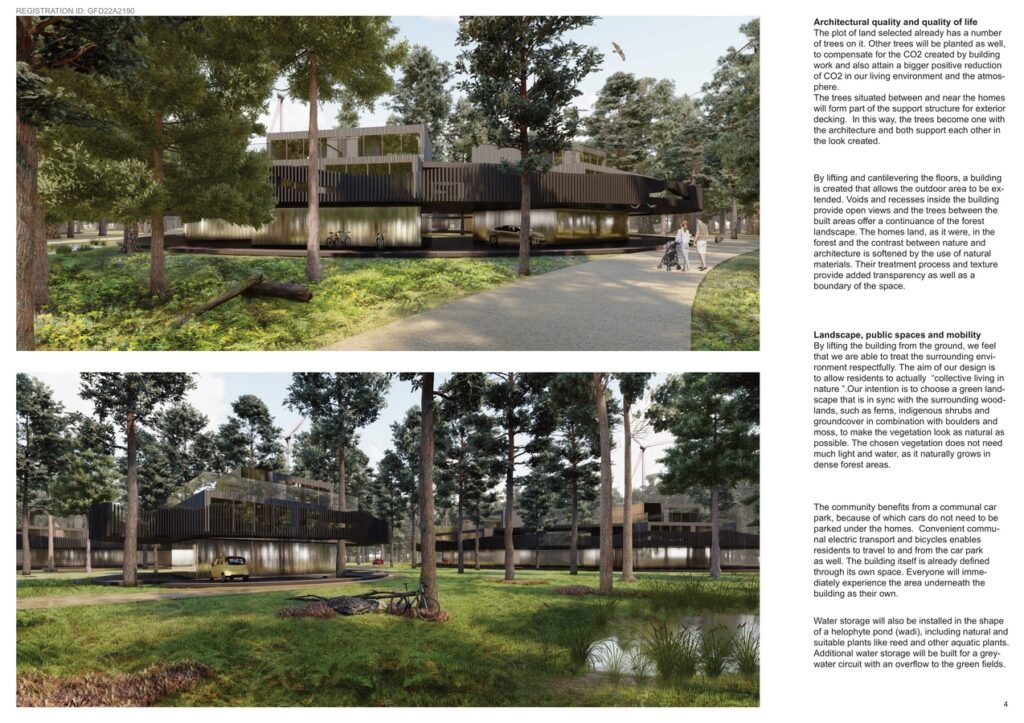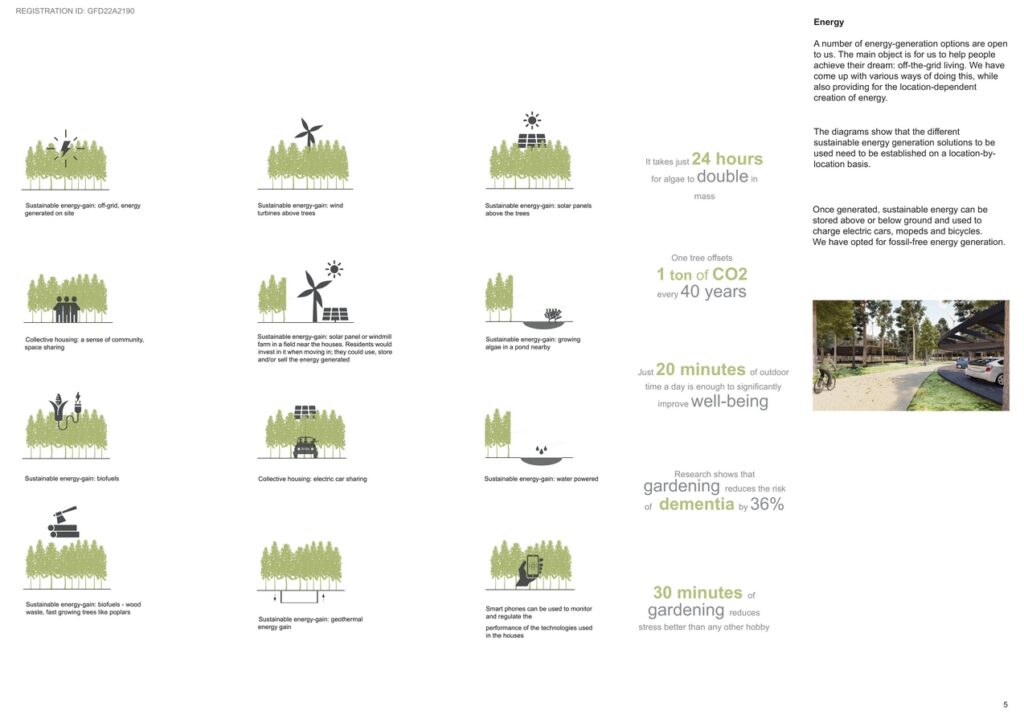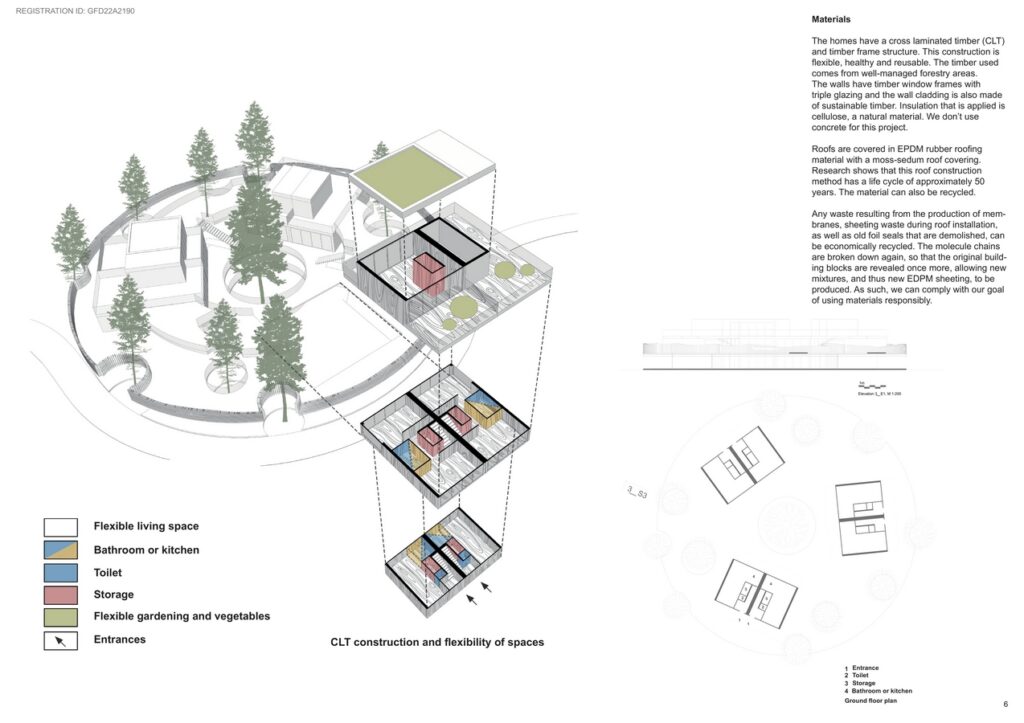We have developed an idea that will pave the way for the organic and open growth of collective living, a way of life envisaged by people who want to create communities in leafy surroundings.
To us, living with others and in harmony with nature was an important starting point for the concept: collective living in nature
Inspired by our idea, we produced a plan that uses the Fibonacci Sequence to facilitate the natural evolution of small communities into bigger communities, in partnership with nature and trees. Biodiversity is strengthened by different types of open community too, each of which makes its own contribution to the diversity of green planting.
Global Future Design Awards 2023: Entries Open!
Silver 🏆 Winner
Global Future Design Awards 2022
Living in Nature
Residential Architecture (Concept)
Firm
UArchitects
Architect/Designer
Misak Terzibasiyan
Design Team
Misak Terzibasiyan
Location
Dordogne in France
Country
Netherlands
Photographer/Copyright
©UArchitects
Collective living is an integral part of the architecture and the nature. The homes are perched on an elevation above the forest floor, the forest landscape continuing uninterrupted beneath and around the houses.
The exterior walls on the ground floor are made out of mirrored glass, making the plinth of the home de-materialise, as it were. It seems not to exist at all, giving the upper floors an appearance of ‘floating’ in between the trees and the ground. The variety of trees separating the homes and on the terraces amplifies the image that everything becomes one with the surroundings.
The upper floor consists of timber frames with panoramic cut-outs offering grand views. It is an omni-faceted building where, on the first floor, the spacious roof terraces provide ample opportunity for quality, diverse outdoor living.
Biodiversity is a key feature on the roof terraces, including a common vegetable and fruit garden on the first floor; the possibility for residents to cultivate their own fruit, vegetables and herbs adds to this unique quality of living. The vegetable garden and the other plants receive rainwater, as well as water from the greywater system.
Each home has a spacious balcony and access to communal terraces. The rooftop terraces are used to grow a diversity of plants and create vegetable, fruit and flower gardens – adding to the unique quality of living on offer. Flowering grasses planted in gardens on the communal roof terraces attract butterflies, insects and bees. Insect hotels and bird baths are set up on the terraces as well and bird boxes are put up on the homes and the trees nearby.
Rainwater is captured and redirected to an underground rain tank via a gulley (wadi). The greenery on the roof terrace/vegetable gardens ensures that rainwater is absorbed slowly. Rainwater is also purified via a natural purification system (helophyte filter) – consisting of a layer of sand, plants and bacteria – making it suitable for re-use by residents and for the gardens on the terraces. Any remaining water is stored in underground water tanks and used when necessary.
We also propose the use of compost toilets; the water from them can be extracted and purified and the remaining ‘product’ used as compost. Wastewater from showers, washbasins, washing machines and dishwashers is purified too and re-used in the vegetable, fruit and flower gardens.


